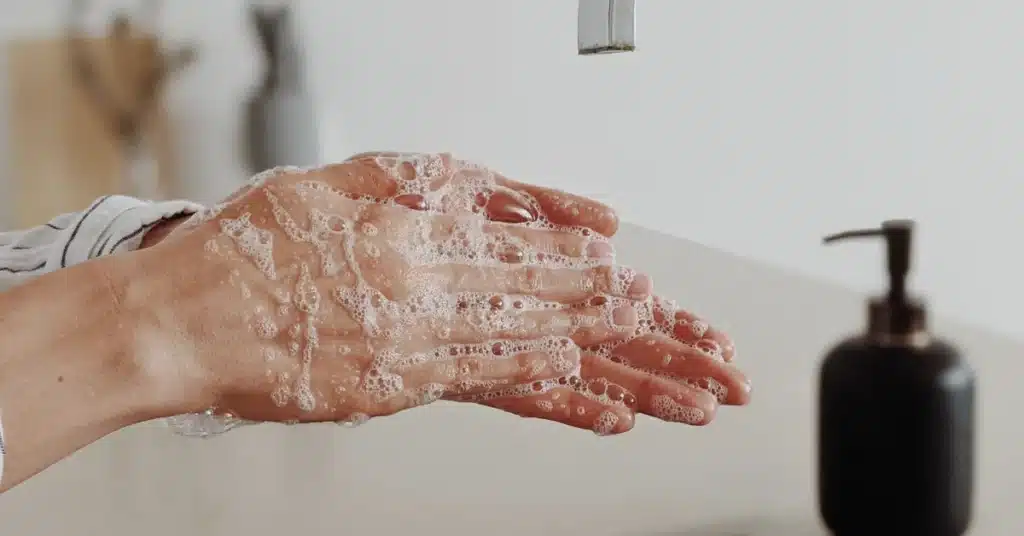Decoding Skin Bumps: Genital Warts vs Pimples
Skin bumps in the genital area can be a cause for concern and anxiety.
Two common culprits that may cause confusion are genital warts and pimples.
While they may have some similarities in appearance, they are distinct conditions with different causes.
Understanding the differences between these two is crucial for accurate diagnosis and appropriate treatment.
In this article, we will explore genital warts vs pimples in detail.
Genital Warts vs Pimples: Quick overview
Here’s an overview table comparing genital warts and pimples:
| Aspect | Genital warts | Pimples in the genital area |
|---|---|---|
| Cause | Human Papillomavirus (HPV) | Various factors (e.g., irritation, poor hygiene) |
| Transmission | Sexually transmitted | Non-sexual causes possible |
| Appearance | Flesh-colored or grayish growths, cauliflower-like texture | Red or white bumps with pus, similar to pimples on other body parts |
| Treatment | Topical medications, cryotherapy, surgical removal | Good hygiene, avoiding irritation, topical medications if necessary |
| Diagnosis | Pelvic, anal examination, or biopsy | Clinical examinations of symptoms |
Causes of genital warts vs pimples
Genital warts are an STI that are caused by some strain of the HPV (Human Papillomavirus).
The virus is mainly transmitted through skin-to-skin or sexual contact.
These warts can appear on the genital areas, as well as in the mouth and throat.
While, pimples in the genital region, less common than in other areas of the body, can occur due to various factors.
It may include clogged pores, folliculitis, or ingrown hairs.
These pimples are not exclusively caused by sexual activity and may be unrelated to STIs.
Appearance of genital warts and pimples

Genital warts often present as small, flesh-colored, or grayish growths with a cauliflower-like texture.
They can be flat or raised and may occur singly or in clusters.
On the other hand, pimples may appear as small, red, or white bumps with a center filled with pus. They can be painful or itchy.
It can occur anywhere in the genital region, including the pubic area, inner thighs, and buttocks.
Diagnosis of genital warts and pimples

Diagnosing genital warts and pimples involves distinct processes tailored to each condition.
In this section, we will cover diagnostic tools for genital warts and pimples.
For genital warts
Healthcare professionals employ various methods to diagnose genital warts.
It includes the following:
Pelvic examination
As part of a pelvic exam, you may undergo a Pap test to detect cervical changes associated with genital warts.
Additionally, your healthcare provider might conduct a colposcopy and biopsy of the vagina and cervix for further evaluation.
Anal examination
To inspect for warts within the anal area, your provider utilizes an anoscope.
It is a specialized device that allows for the examination of the interior of the anus.
For pimples
Diagnosing pimples in the genital area involves a careful examination by a healthcare professional.
The doctor will visually inspect the affected areas to identify the presence of red or white bumps resembling pimples.
They may inquire about the patient’s medical history and lifestyle factors to determine potential causes.
If the clinical evaluation suggests the presence of some underlying conditions or other specific health issues, additional laboratory tests may be necessary.
Managing genital warts and pimples
Managing genital warts and pimples involves different approaches tailored to each condition.
This section will cover these in detail:
For genital warts
Upon confirmation of genital warts, healthcare providers may recommend several treatment options.
It includes the following:
Topical medications
Prescription or over-the-counter creams containing substances like Imiquimod or Podophyllin may be applied directly to the warts.
These medications work to stimulate the immune system or destroy the wart tissue.
Cryotherapy
Cryotherapy comprises freezing the warts using liquid nitrogen.
The freezing process causes the wart tissue to die and eventually fall off.
This procedure is usually performed in a healthcare setting.
Surgical removal
In cases where other treatments prove ineffective, or if the warts are widespread, a healthcare professional may recommend surgical removal.
This can be done through laser surgery or electrocautery, where the warts are cut or burned off.
For pimples
The management of pimples in the genital area focuses on alleviating symptoms and preventing further irritation.
Depending on the cause and severity of the pimples, the following preventions may be recommended:
Hygiene practices

Maintaining good hygiene is crucial.
Regular cleansing with mild, fragrance-free soap and warm water helps prevent bacterial or fungal overgrowth that can contribute to pimples.
Topical medications
Over-the-counter or prescription topical medications containing Benzoyl Peroxide may be recommended.
This will help alleviate inflammation and promote healing.

Are you having discomfort from pimples?
Choosing the best acne medicine from WowRx is easy:
Erytop 1% Gel 20gmAvoid friction
Minimizing friction and irritation in the genital area is essential.
This involves wearing breathable underwear, avoiding tight clothing, and practicing safe sex to prevent skin irritation.
Resist the temptation to pop or squeeze genital pimples. This can lead to infection, scarring, and increased discomfort.
Conclusion
The distinction between genital warts and pimples is crucial for accurate diagnosis and effective treatment.
Genital warts, caused by specific strains of the Human Papillomavirus (HPV), are transmitted through sexual contact.
These warts present as flesh-colored or grayish growths with a distinctive cauliflower-like texture.
Diagnosis of genital warts involves visual inspection, pelvic and anal examinations, and, if needed, biopsies.
Treatment options include topical medications, cryotherapy, and surgical removal, tailored to the severity of the condition.
On the other hand, pimples in the genital area can result from various factors, such as clogged pores, folliculitis, or ingrown hairs.
These pimples, unlike genital warts, are not exclusively linked to sexual activity.
They may appear as red or white bumps with pus, causing pain or itching.
Diagnosis involves visual examination, and its management focuses on good hygiene practices and, if necessary, topical medications.
Frequently Asked Questions
What is genital warts?
Genital warts are Sexually Transmitted Infections that are caused by some strains of the HPV (Human Papillomavirus). These warts manifest as small, flesh-colored growths with a distinctive texture. It mainly appears on the genital and anal areas.
How is genital warts different from pimples?
Genital warts and pimples in the genital area differ in causes and appearance. Genital warts result from the HPV, appearing as flesh-colored growths. Pimples are often caused by factors like friction or folliculitis. It presents as red or white bumps with pus.
How to treat genital warts?
Genital warts are treated through various methods. Topical medications like Imiquimod, Cryotherapy, and surgical removal are common approaches. Consultation with healthcare providers is crucial for an individualized treatment plan and guidance.
How to manage pimples in the genital area?
Managing genital pimples involves maintaining good hygiene with mild, fragrance-free soap, avoiding friction with breathable underwear, and practicing safe sex. Topical medications containing benzoyl peroxide can be used. Seek medical advice for severe cases and discuss preventive measures for long-term management.
WowRx uses only high-quality sources while writing our articles. Please read our content information policy to know more about how we keep our content reliable and trustworthy.






